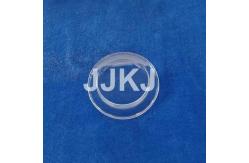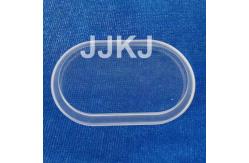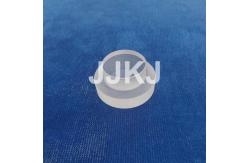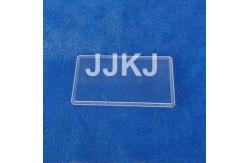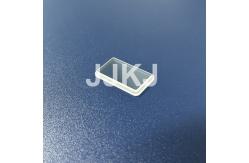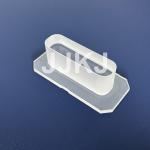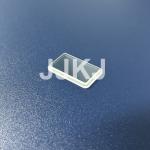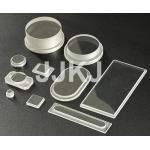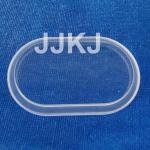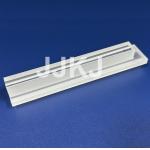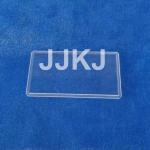Why choose Sapphire?
One of the hardest materials available
Superior IR & UV transmission compared to other optical
materials
Highly scratch & abradant resistant
Highly chemical resistant
Maximum temperature rating of almost 2000℃
Excellent dielectric & loss tangent performance
Properties of Single Crystal Sapphire:
| Product name | Round Sapphire step window |
| Material | Optical sapphire crystal |
| Density | 3.98g/cm³ |
| Hardness Mohs | 9 |
| Fusion point | 2045℃ |
| Boiling point | 2980℃ |
| Diameter | 5-500 mm |
| Diameter Tolerance | as request |
| Thickness | 1-100 mm |
| Thickness Tolerance | as request |
| Surface quality | DSP 60/40 or better |
| Clear Aperture | 90% |
Sapphire Components
Sapphire's range of superior qualities make it ideal for optical
and non-optical components.
From the forward-facing optics of
imaging systems to the thermal insulators in plasma systems,
Sapphire's performance at extreme physical conditions often make it
the preferred choice for the following:
Lightguides
Sapphire offers higher working temperatures in applications such as
temperature thermometry and IPL systems, with a broad transmission.
Lenses
High optical quality Sapphire is used for lenses in systems that
require durability and ruggedness where standard materials suffer
from grit, impact and temperature damage. Sapphire lenses also
offer high performance in laser devices, offering high thermal
conductivity.
The broad transmission of Sapphire, across visible and NIR
spectrums, make it ideal for FLIR imaging systems in hazardous
environments, or where the reduced thickness of Sapphire lenses
lead to reduced system footprint.
Tubes
Sapphire tubes, made using the Stepanov growth method, replace
glass and quartz tubes in high temperature and pressure systems
such as plasma applications and insulators.
Pins and Rods
As well as the optical proporties offered by Sapphire rods for
fibre optcal and light-guide applications, the physical strength
and inert nature of Sapphire make it ideal for engineering and
structural uses.

